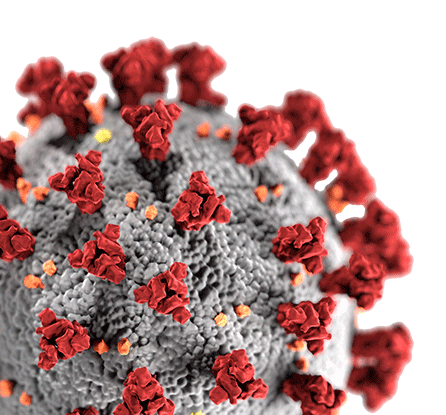Rural Americans feel less threatened by COVID-19 than urban and suburban Americans do, but still view mitigation as important
Editor’s Note (7/22/2020): This article includes findings from all four waves of data collection that began on March 28 through June 29. Each wave has collected data from 1,000 U.S. adults using a census-balanced, national non-probability sample. The new information, shared below, examines the attitudes and behaviors of Americans based on their environment. Learn more about the ICF COVID-19 Monitor Survey of U.S. Adults.
COVID-19 has taken the highest toll on more densely populated regions of the United States, with New York City reporting over 22,000 deaths alone. This current analysis focuses on differences in the perceptions of the pandemic by respondent location, specifically those living in urban, suburban, and rural areas.
Rural Americans are much more likely to believe that the COVID-19 threat is blown out of proportion—and the gap has continued to widen over the past four months.
In March, there was little difference between respondent perceptions of the threat of COVID-19 based on location. However, the perception that the threat of COVID-19 had been blown out of proportion has increased from 21% in rural areas in March to 33% in June, while remaining about the same in urban (20% in March and 23% in June) and suburban (16% in March and 19% in June) areas.

Rural Americans see COVID-19 as less of a threat to public and personal health.
Similarly, perceptions of the coronavirus pandemic as a major threat to public and personal health was fairly similar across respondent location in March. But while this perception has remained largely unchanged among urban and suburban Americans, the percentage of rural Americans who view the coronavirus as a major threat to public health has dropped steadily from March (69%), to April (63%), to May (59%) and June (58%). The proportion of rural Americans who felt that COVID-19 was a major threat to their personal health dropped from 42% in March to 33% in April, where it remained in May and June.

Concern about local hospital resources to treat COVID-19 has fallen in urban, suburban, and rural areas between March and June. But concern about hospital resources has dropped further in rural areas, with half of rural Americans reporting that they are not at all worried or not too worried about their local hospital’s resources to treat all patients infected with COVID-19 in June, compared to 36% of urban and 42% of suburban Americans.

Rural Americans overwhelmingly view wearing a mask and maintaining distance from others as important.
Despite feeling less threatened by the coronavirus than their urban and suburban counterparts, rural Americans still overwhelmingly view behaviors that limit the spread of COVID-19 as important. In June, 79% of rural Americans indicated it was very or somewhat important to wear a face mask. However, this is substantially less than suburban Americans (88%) and slightly less than urban Americans (86%).

Rural Americans also value maintaining physical distance (three to six feet) from others, with 84% in June indicating it is very or somewhat important. Again, this is a lower percentage than urban and suburban Americans (93% and 90%, respectively), but still a substantial majority.

In March, as case numbers and deaths due to COVID-19 steadily increased across the United States, urban, suburban, and rural Americans held similar views regarding the threat and impact of the pandemic. Over time, rural American views regarding the threat and impact of the virus have decreased more than those held by suburban and urban Americans. This is likely, at least in part, due to the bulk of the impact of COVID-19 being felt in urban and suburban areas. However, despite these changes, rural Americans still overwhelmingly view behaviors that minimize the spread of the virus as important.
Watch this space
How will rural American views of the threat of COVID-19 change as the pandemic evolves? What will happen as summer comes to a close and states update their recommendations and requirements? We will continue to report key findings from our data collection efforts over the coming weeks and share this information with public health officials in support of their response to COVID-19. Sign up to receive alerts as we roll out upcoming results and package our insights into reports.
Learn more about the ICF COVID-19 Monitor Survey of U.S. Adults.
